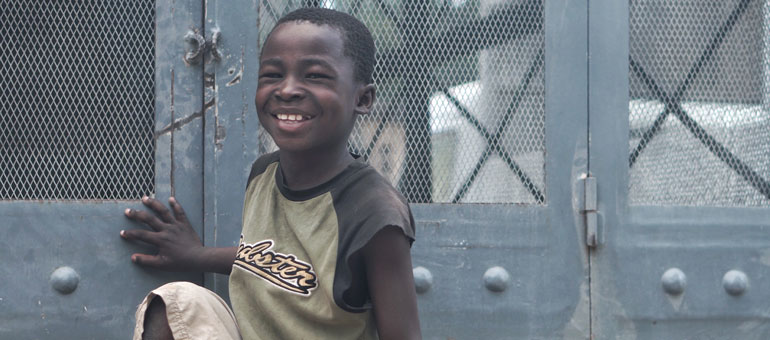Hidden hunger remains a significant public health challenge in Haiti. The RANFOSE project – a joint initiative by the Global Alliance for Improved Nutrition (GAIN) and the Partners of the Americas – aims to increase the availability of high-quality, fortified staple foods across the country and expand the local production and importation of fortified foods.
With two and a half million people living in extreme poverty, Haiti is the poorest country in the northern hemisphere. The statistics are worrying. One out of three Haitians live on less than USD 2 per day and 60% of children under five years are anaemic. The country has made headlines in the past decade for a series of natural disasters and public health crises which include a destructive earthquake in 2010 followed by a cholera outbreak, and a devastating hurricane in 2016. However, what the statistics and headlines sometimes miss is the story of an extremely resilient community and great potential for recovery and improvement. It is this optimism that GAIN is focused on, well exemplified by the government’s commitment to improve nutrition. In 2017, together with Partners of the Americas, GAIN launched RANFOSE (Ranfòse Abitid Nitrisyon pou Fè Ogmante Sante), a four-year project financed by USAID, with the aim to address micronutrient deficiencies in Haiti.
An Evidence-Based Solution as Part of a Long-Term Development Strategy
Like all developing countries, Haiti has limited resources while the needs are immense. For this reason, a prioritization analysis of potential interventions was needed to decide where to prioritise efforts. In 2017 an eminent panel from the Copenhagen Consensus Center conducted a cost-effectiveness study which identified food fortification as the second most effective investment for Haiti’s development, after improved electricity supply. According to the analysis, an investment of 331 million gourdes (USD 5 million) to fortify 95% of wheat flour will avert 140 neural tube defect deaths and more than 250,000 cases of anaemia annually. Building on efforts of the ministry of health, the Haitian Parliament passed a law in February 2017 mandating the fortification of oil, flour, and salt with micronutrients. The RANFOSE project is supporting the government and providing technical assistance to involve industries in the implementation of this law.

One out of three Haitians live on less than USD 2 per day and 60% of children under five years are anaemic.
The Goals and Challenges
The RANFOSE project was launched in late 2017 with the purpose of decreasing micronutrient deficiencies, strengthening the national strategy for fortification, and improving quality control for local and imported fortified food products. The project is working closely with local stakeholders throughout the food system including the Ministry of Health and Population (MSPP), the national laboratory, the Ministry of Commerce and Industry (MCI) and leaders in the salt, oil, and flour industries.
The first months of the project have focused on identifying all the relevant partners that should be involved in the National Fortification Committee. Nutrition and food safety experts in the RANFOSE team have also evaluated the strengths and weaknesses of the local industries and the food control quality laboratory and formulated recommendations in order to achieve and respect fortification standards. The next priority is to assist in the development of a system to monitor food products to ensure that they are meeting the prescribed standards.
The potential impact of a comprehensive fortification programme is remarkable. Fully implemented it will increase the supply of micronutrients in national food systems which should lead to improved health outcomes. As an example, it is estimated that one-third of preschool-aged children are Vitamin A deficient. This prevalence causes over 3,200 preventable deaths annually and will cause thousands of children to become blind. These tragic outcomes will be prevented once the oil industry starts fortifying edible oil with Vitamin A.
Work for the Coming Months and Reasons to Remain Optimistic
One of the key added values of the RANFOSE project is that it will also undertake a national research study to improve the data available on nutrition and micronutrient status in the country. This will include the collection of detailed information which will be used to describe the prevalence of micronutrient deficiencies among women and young children in Haiti. The study, which is starting in August through a collaboration between GAIN, Partners of the Americas, UC Davis University, and the MSPP, will inform planning and implementation of health and nutrition programmes in the coming years.
Despite facing many challenges linked to natural disasters, poverty and political instability, the RANFOSE team remains optimistic about the potential impact of the project. The fortification agenda has already received support from private sector leaders and the team is working with relevant industries and key players from UN and civil society. Many importers have contacted their suppliers to order fortified food and local industries have already started to adapt their processes and prepare for the inclusion of the micronutrient premix. Some have already started with voluntary fortification and are paving the way for others to follow.
Haiti is showing in its resilience the strength to look for a brighter and healthier future – and food fortification is a positive step in that direction.